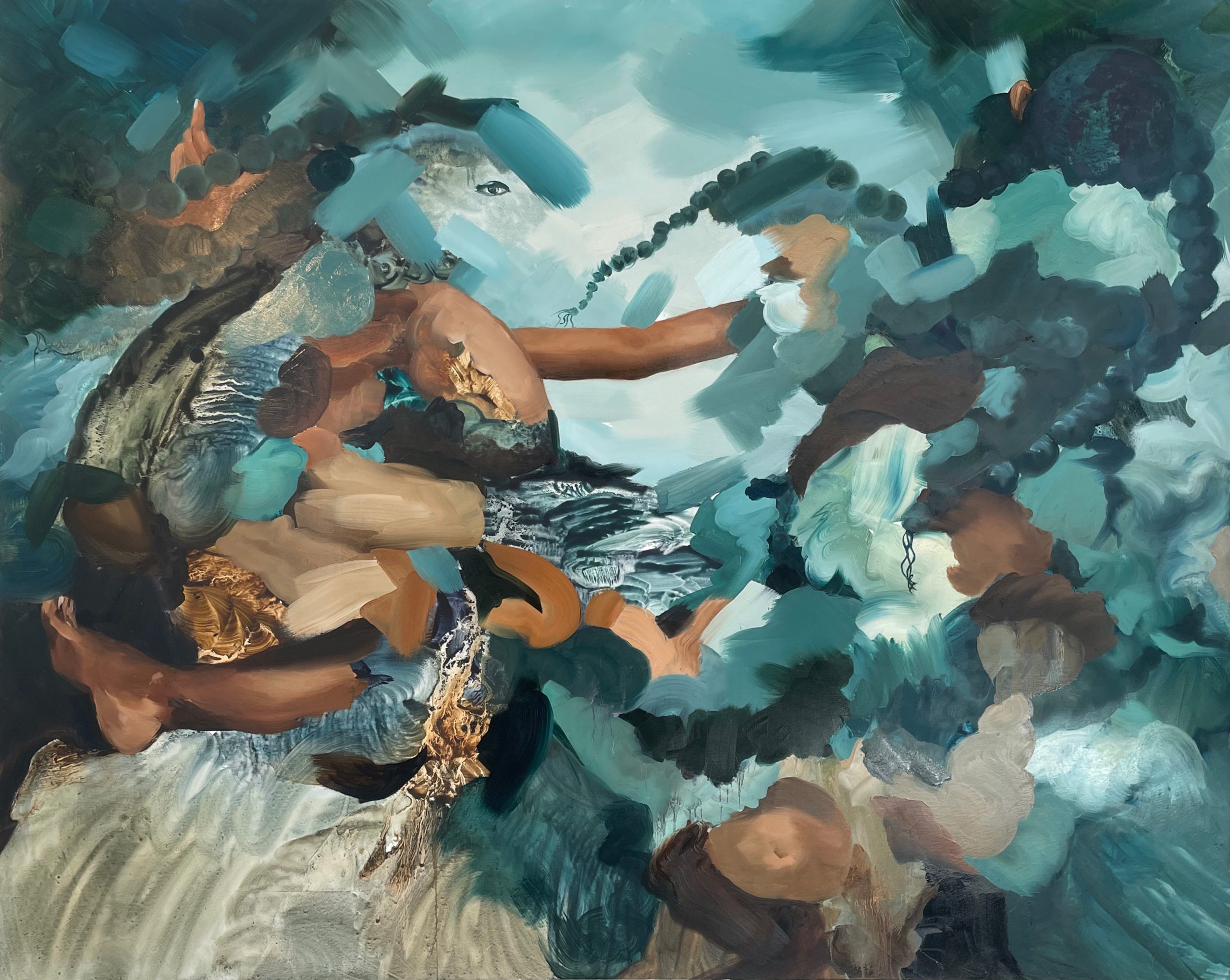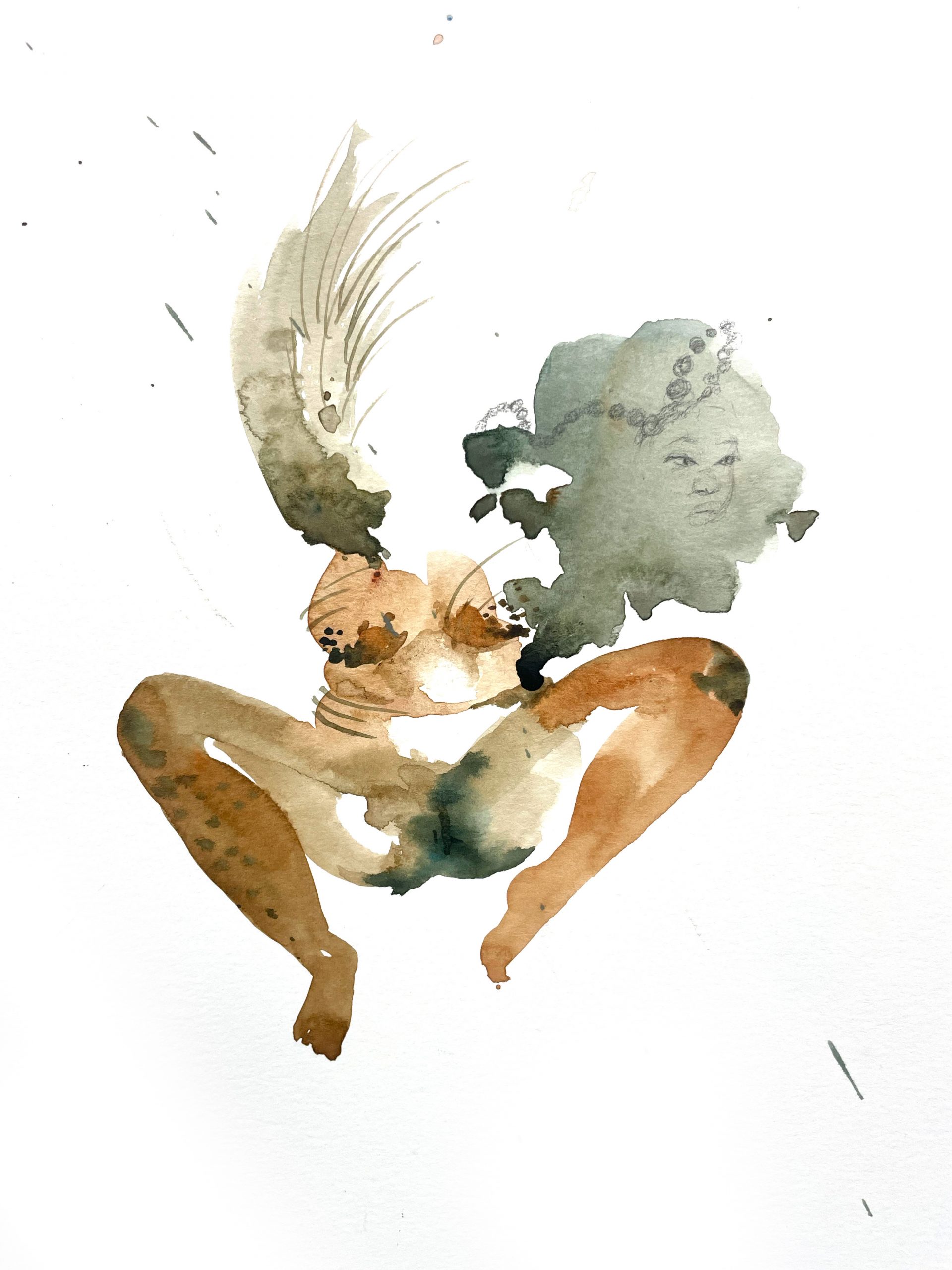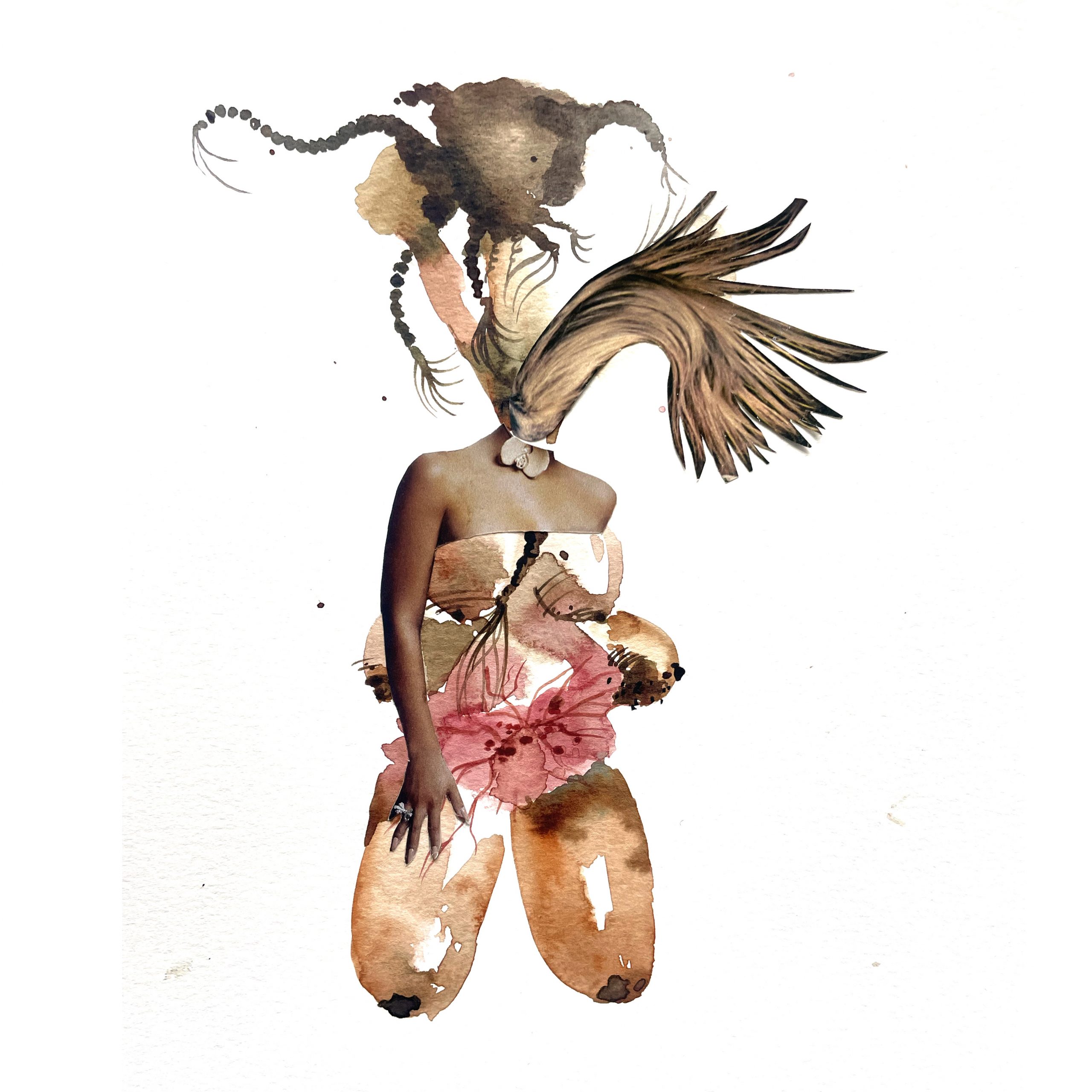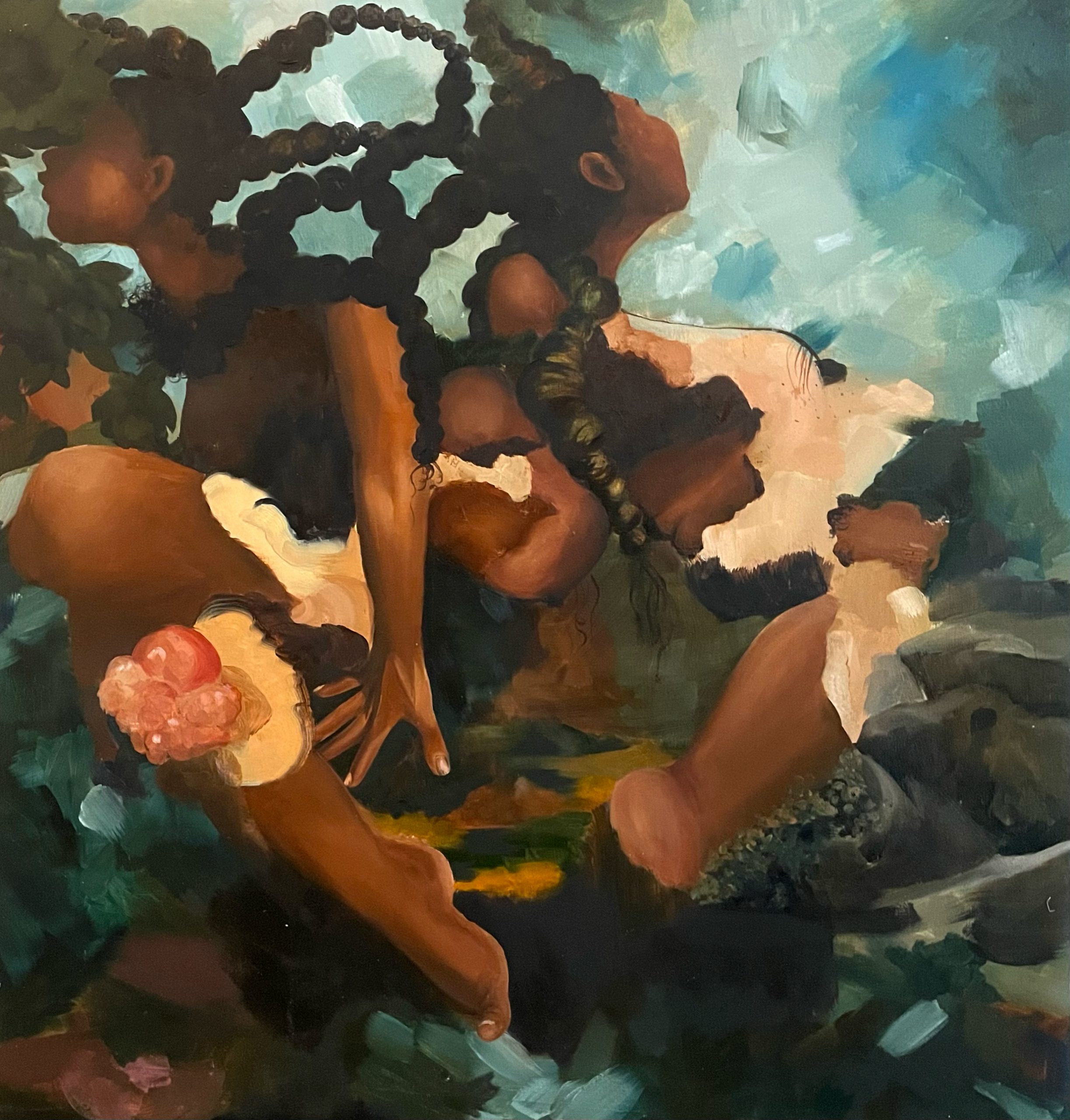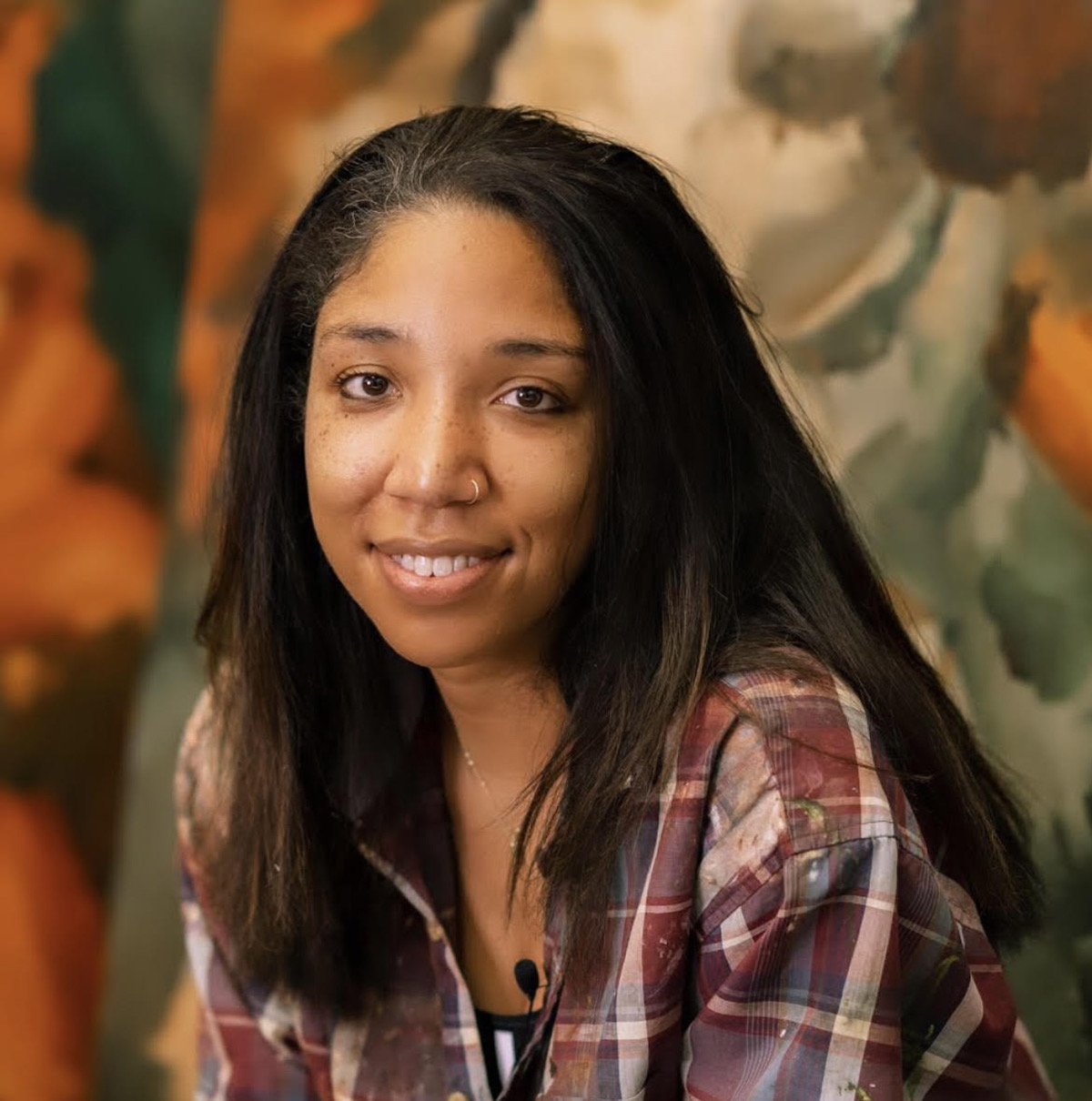
Where things happen #24— July 2024
Different generations of artists have imagined this idyllic time, something that people have long called the “Golden Age” or “Arcadia.” At this time, humans and nature lived in perfect harmony and symbiosis, and all entities felt perpetual peace and fertility. This is often called a mythological fantasy or artistic idyl, fantasizing a supposedly peaceful ease that preceded civilization.
Debra Cartwright’s work is a unique blend of intuitive abstraction and programmed figuration, existing in a space that is both idyllic and enigmatic. Her pieces not only capture a timeless tension but also envision potential balances between human interventions and the organic flow of nature. Fragmented body parts emerge in lacustrine-suspended space, built through a delicate and mostly instinctive layering of swathes of colors and sensations.
Reinventing both the genre of Landscape and portraits, Debra confidently moves in this subconscious imaginary space of creation, where her figurative and symbolic suggestions emerge from a free movement of the body and pigments on the canvas, tonal contrasts, and the densely immersive atmospheres created through the color applications.
When we met for the first time in her studio in Brooklyn, Debra had just started to work on a new series of works. Located in a building with many other studios, hers is precisely what we can expect from a painter who physically engages with colors and the canvas surface: a trolley full of color tubes, with remains of paint from previous works accumulated into multicolored encrusted piles of pigments which already reveal some of the changes in the palette the artist went through, moving from warm tones to a blue and green dominated gradients. On the wall sits some prepared canvas, but some other progress is on the floor – as she explains, she often starts from there with a more performative action that initiates and transfers the movement directions on the canvas.
In her multilayered blending of ways to apply the oil painting, she creates work that is deeply respectful to the natural world and its rhythms, channeling the vibrant energy that can generate and be released from a better synchronization between the human and the organic world. During our discussion in her studio, I was captivated by the unique perspective that Debra brings to her work. She draws parallelisms between the violence and exploitation of the black female body and the exploitation of the American Landscape, a viewpoint that adds depth and complexity to her art.
Getting deeper into the interconnections between her personal story and her artistic practice, she confesses that, as the daughter of a gynecologist, her visual vocabulary is largely informed by the anatomical illustrations she saw so many times, skimming through her mother’s books, recognizing and absorbing the aesthetic qualities that medical images can have.
Most of Debra’s color palette is inspired mainly by Hudson’s river painters, mimicking how they portrayed the American landscape for the first time, despite their specific gaze and approach already revealing an anthropocentric and western-centric aspiration of territorial domination of this “new Land.” Cartwright’s symbolic and metaphorical landscape eventually suggests both a nature and a nature of human bodies, which colonial histories have already shaped.
All of Debra Cartwright’s art eventually engages in this attempt to explore possibilities of re-embodiment and myth creation, which can suggest more fluid metamorphosis and evolution of bodies beyond gender identifications and stereotypes.
At the same time, in creating the illusion of both physical and psychological depth through the use of color tones and tonal contrasts, Debra’s use of oil painting seems to revive the color tradition and atmospheric vibrancy of Venetian painters at the height of the “Pittura Tonale”: giving a great emphasis on the general mood and atmosphere, Debra similarly builds on a delicate an almost unperceivable blending of tones and colors gradations closer to natural textures, reaching a blurred quality that adds an otherworldly ambiguity but also a glowing vibrancy to work.
Debra’s work often evokes a sense of the Sublime, a sentiment of awe in the face of the grandeur of natural phenomena, but also a hint of terror at their looming force over human intentions. This ability to stir such emotions in the viewer is a testament to the power and depth of her art. At the same time, the harmonious coexistence of anthropomorphic and organic elements allows Debra’s works to eventually convey a sense of reverence for the natural world and a belief in the existence of unseen spiritual forces.
As we see from the numerous white papers around, the other more spontaneous and intuitive output of Debra’s artistic research is those delicate guaches, in which feminine bodies and floreal and vegetation elements freely combine, merge, and turn into an organic and extremely poetic ensemble, intertwining and blending.
Here, the dynamic and symbolic process of delicately applying the painting and waiting for its slow drying further exemplifies and reinforces this idea of a gradual transition from one state to the next, from a possibility of human significance and expression to another.
As Debra explains, these fantastical creatures that populate her gouaches come spontaneously to her, suggested by the movements of colors and pigments on the paper, combined with something more unconscious. They emerge in the act of painting, allowing her to explore those types of works’ ancestral symbologies and narratives surrounding the relation between the body and nature. Debra Cartwright’s luminous works on paper portray those figures in eternal metamorphosis, fluid entities in transformation, as they confidentially transition from one space to another. Debra often adds collage parts, creating an even more intricate overlapping of narratives.
As I asked the source of those fragments of printed images that perfectly blended and completed the watercolors, I discovered that Debra Cartwright’s background includes education and years of experience in illustration, which later took her to a successful career in Artistic Direction for magazines. Something that Debra ultimately left behind after the pandemic, she arrived at the resolution to just focus on her art and her painting. From that life chapter come the tons of magazines piling in her studio, which she then dissects to find a space for new myths and imaginary-making regarding the representation of black women in today’s society.
As she tells me about her journey so far, Debra appears calm and confident in her tone of voice and expressions. Debra Cartwright’s art has been met with widespread acclaim, with her recent booth at Frieze LA selling out completely. This success has been followed by a steady demand for her paintings and works on paper, a testament to the quality and appeal of her art. Debra’s unwavering commitment to her art is evident in her approach. She takes her time, refusing to rush any piece that emerges from her studio. Instead, she engages in a meticulous process of listening, introspection, and rigorous self-criticism with each new canvas, a testament to her dedication and passion.
In talking with Debra at the studio, one can immediately tell from her tone of voice and confidence in the studio the level of her ambition and professionalism, which will allow her to keep striving in today’s contemporary art scene.






















